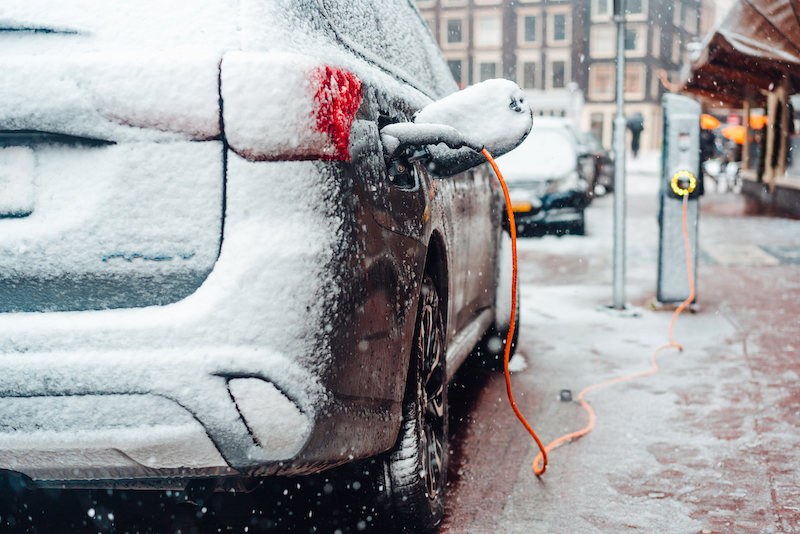
Gone are the days where electric cars struggle on snowy roads. Photo: Shutterstock.
Tis the season to be… cold. It is New England, after all. What would winter be without frigid temperatures to numb my nose? That’s why I and my fellow cold-loathing introverts prefer to stay indoors at this time of year.
On the off chance I do have to leave my cozy apartment (the horror, I know), I usually depend on my car to get around. Right now, my trusty, dusty Honda Civic is all I can afford. But as electric cars get cheaper and we see more financial incentives to purchase one, I can’t help but think about what my next car could be.
But wait! Can I count on an electric car to handle New England’s cold, snowy winters?
The answer is YES. And here are three reasons why.
1. Better Batteries = Better Mileage
Cold weather is a strain on any car – gas or electric. The power it takes to heat your car and the way you drive can quickly drain the car’s fuel, especially in the winter.
In the past, a big concern with electric vehicles was that cold weather slowed down the chemical reaction within battery cells. That meant it not only took longer to charge them, but you also couldn’t drive as far on that charge. However, electric car batteries have improved tremendously. Today, they hold a greater charge and provide a once unthinkable range – in warm and cold weather.
Another strain on electric vehicle batteries is keeping the car itself warm. Because electric cars are so efficient, they don’t create nearly as much waste heat compared to gas guzzlers. But less waste means the car must drain the battery to generate heat instead. To fix this issue, many newer models of electric cars now use heat pumps. Heat pumps take those small amounts of excess waste and, through a highly efficient process, use it to warm the car. That means less strain on the car’s battery, which improves mileage, range, and shortens charge length – especially in the winter.
2. New England Is Getting More Public Charging Stations
State governments across New England are rapidly installing more public charging stations. The federal Inflation Reduction Act, passed late last year, and the Bipartisan Infrastructure Law are directing additional, unprecedented funds to help scale up this effort even more. More public charging stations means less worry about running out of a charge in the middle of your ski weekend (or your trip to the store for more hot cocoa). Not to mention, electric vehicles don’t require traditional gas stations where you must stand and begrudgingly freeze while waiting for your car to re-fuel. With more public charging stations, you can charge your car at work, while shopping for groceries, and so much more.
In New Hampshire, for example, the state Public Utilities Commission approved a plan that would make electric vehicle charging stations much more accessible and widespread across the state. And Massachusetts’ Commission on the Future of Transportation recommended a timeline to deploy more charging stations, especially in low-income neighborhoods. The Inflation Reduction act also provides businesses tax credits when installing charging stations in low-income neighborhoods.
3. Electric Cars Can Handle the Snow
Electric cars can handle snowy and icy roads better than gas-powered cars. That’s because their batteries are installed under the floor, giving electric vehicles a lower center of gravity. This difference results in easier handling in slippery conditions.
Not to mention, car manufacturers are producing electric vehicles of all types and sizes, with more models coming out every year. Gone are the days of the stereotypical tiny and weak electric car. You can now find them in almost any size you want.
Melting Away Myths: Electric Cars Work Well in the Winter
Whether you thrive in the frozen landscape of a New England winter or prefer the warm escape of your living room, the reality is that electric cars can take the cold when you need to travel. Better batteries, more charging stations, and easier handling means these vehicles can get you where you need to go without sacrificing your health or the climate – even when temperatures plummet. While that doesn’t make shoveling out your car any more pleasant, it does provide reassurance that this climate solution can work for all New England families.




